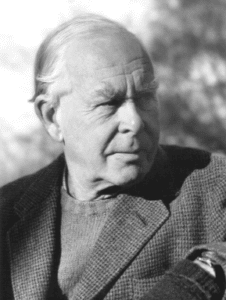Your FREE Handout
Attachment Styles

British psychiatrist John Bowlby first coined the term attachment in 1958. It refers to the emotional connection babies, and young children make with their care givers and can inform;
Attachment Styles
Attachment theory was first developed by John Bowlby following his observations of orphaned and emotionally distressed children between the 1930s and 1950s.
He found that infants had an instinctive drive to seek closeness to their caregiver for comfort and safety, and that infants became distressed when separated from their primary caregiver.
Bowlby believed attachment behaviour to be a survival-driven phenomenon, with an evolutionary basis.
Bowlby coined the term “secure base” (Bowlby, 1988) to describe the symbolic position of the attachment figure as a place of security. The presence of a secure base allows the child to experience the safety to explore, confident that the caregiver will continue to meet their basic security and safety needs.
Bowlby posited that the early emotional bond between caregiver (usually mother) and child was crucial for normal social and emotional development in the child.
Bowlby’s theory of internal working systems describes the ways in which the child develops an internal view of themselves and their expectations of how others are likely to respond to them, which informs their social behaviour.
Bowlby theorised that a child’s interactive social experiences impact on their internal working system (Holmes, 1993). As the name suggests, Bowlby believed that an internal working system is not fixed, and can evolve with new experiences.
A student of John Bowlby, Mary Ainsworth took attachment theory in a new direction by studying the behaviour of the caregiver, and its impact on infant attachment.
Famously, Ainsworth conducted the “Strange Situation” experiments, in which infants’ behaviour and responses are observed in a new environment, when the caregiver is present, when a stranger arrives, when their caregiver leaves, as well as the infants’ response to their attachment figures on their return.
Ainsworth’s observations showed infant attachment to be more nuanced than Bowlby had first suggested. Following on from the Strange Situation study, Ainsworth developed a model of three attachment styles:
In 1986 researchers Main and Solomon observed a fourth attachment style – disorganised attachment – to describe infants who seem confused, hazy or anxious in the presence of their attachment figures, ( parents or caregivers)
The infants displayed disoriented behaviours suggesting that they were not secure with themselves or others. Further research indicated that an infant who was both ‘Horrified and Terrified’ and had very inconsistent caregiving may develop this attachment style.
Children who retain this attachment style may:
“… in children, security or insecurity of attachment is not a characteristic of the individual, but rather of a relationship: it is not uncommon for a child to be securely attached with one parent, and disorganized (or insecurely attached) with the other (Main, 1995).”
Attachment Styles
Our attachment to our primary carer begins to develop in the womb, and our attachment styles, influenced by our experiences, continue to evolve throughout our lives.
Traumatic experiences, relationships and therapy can all impact on our attachment styles and our internal working models in different ways.
Attachment styles often differ even between people who have had similar life experiences. The complexity and diversity of our patterns of attachment mean that addressing our attachment in therapy is likely to be a long-term and individual process.
This article was written for Counselling Tutor by Erin Stevens
References
Bowlby, J. (1988). A secure base: Parent-child attachment and healthy human development. New York: Basic Books.
Holmes, J. (1993). John Bowlby and attachment theory. London New York: Routledge.
Main, M. and Solomon, J. (1990) in: Greenberg, M., Cicchetti, D. & Cummings, E. Attachment in the preschool years : theory, research, and intervention. Chicago: University of Chicago Press.
For a deeper dive into Attachment Theory, see our comprehensive guide.
Notice any broken link or issues with this resource? Kindly let us know by email
Email us